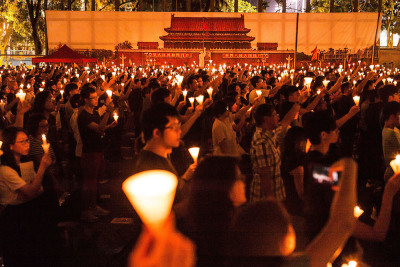China's Communist Party: A brief history
Repression and resistance

As the Communist government cracked down on civil liberties, a significant area of repression has been the treatment of Christians and other religious communities.
Jonathan Dingler of ChinaAid, a Christian human rights watchdog, told CP that freedom of religion “has always been a major concern in China.”
“While there were times when certain areas were more tolerant of Christianity, like Shenzhen near Hong Kong, persecution for all religious groups has dramatically increased,” he said.
“A lot of how faith groups are being persecuted directly stems from how the Chinese Communist Party dealt with Falun Gong practitioners from 1999 and beyond.”
Dingler said that members of the Falun Gong movement “have been abducted into labor camps, ‘re-educated,’ tortured and sometimes harvested for organs.”
“We are seeing a lot of similarities between this and the Uyghur crisis on a massive scale. Falun Gong practitioners, and now all other faith groups, are generally charged with ‘subversion of state power’ or ‘inciting subversion of state power,’” Dingler added.
“This is the government's way of getting rid of illegal religious leaders, which they initially did with Falun Gong.”
In May 1989, around 1 million Chinese, mostly students, gathered at Tiananmen Square in Beijing to protest, demanding greater democratic representation.
Following weeks of demonstrations, the Chinese police and military entered the Square in June of that year and violently dispersed the protests, resulting in thousands of deaths.
An iconic image from the well-documented protest was of an unknown figure commonly called “Tank Man,” who stood in front of a line of tanks and eventually even climbed onto one of them.
Although the 1989 Tiananmen Square protests are probably the most widely known demonstrations against Communist policies, others have taken place since then.
Amnesty International China researcher Doriane Lau told CP about other demonstrations, including the 1999 Falun Gong protest in Beijing, the PX protest in 2011 over the presence of chemical factories in certain regions, the “Jasmine Revolution” protests in 2011, labor protests in 2012 and 2018, and protests against certain evictions in Beijing in 2017.
“Given the crackdown on the right to freedom of peaceful assembly in China, a meaningful assessment of civil society movement/mass movement would also include other more dispersed but widespread movements online and offline,” explained Lau.
“They include the New Citizens' Movement since 2012, MeToo movement, vaccine-scandal protests, protests related to food safety, and migrant worker protests.”
Hart, of the College of William and Mary, told CP that China has also seen many smaller protests among laborers “due to economic reform” as well as “several serious Uyghur protests.”
“There were huge protests over the landslides triggered by the Three Gorges Dam just prior to the start of the 2008 Olympics,” she added. “Foreign media also was very critical due to restricted access to the internet.”
Nevertheless, Hart did not consider the various protests comparable to the scale of the 1989 Tiananmen Square demonstrations.




























